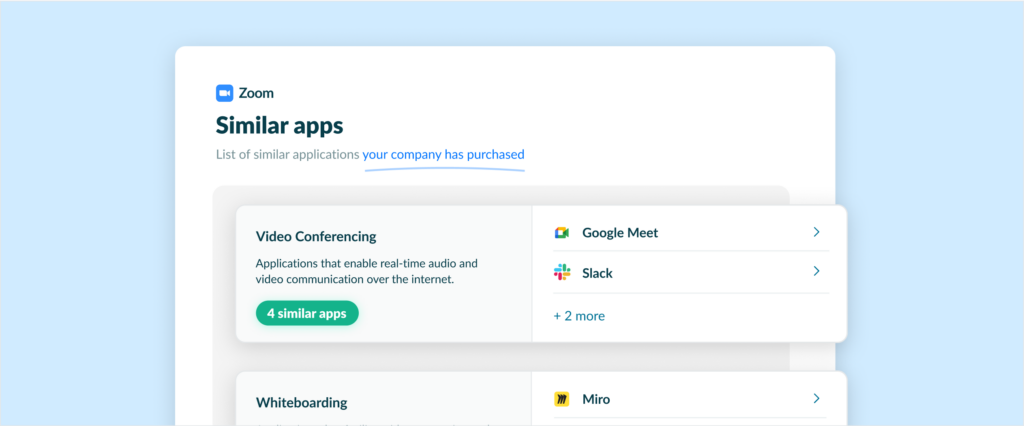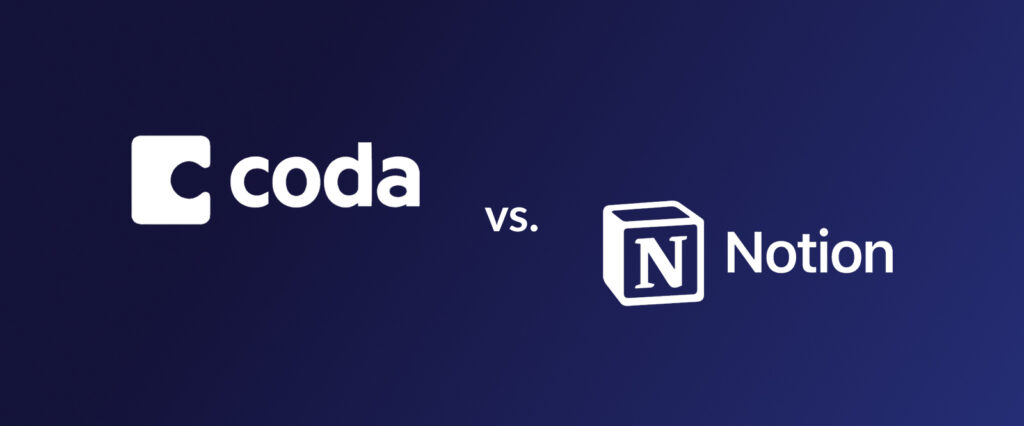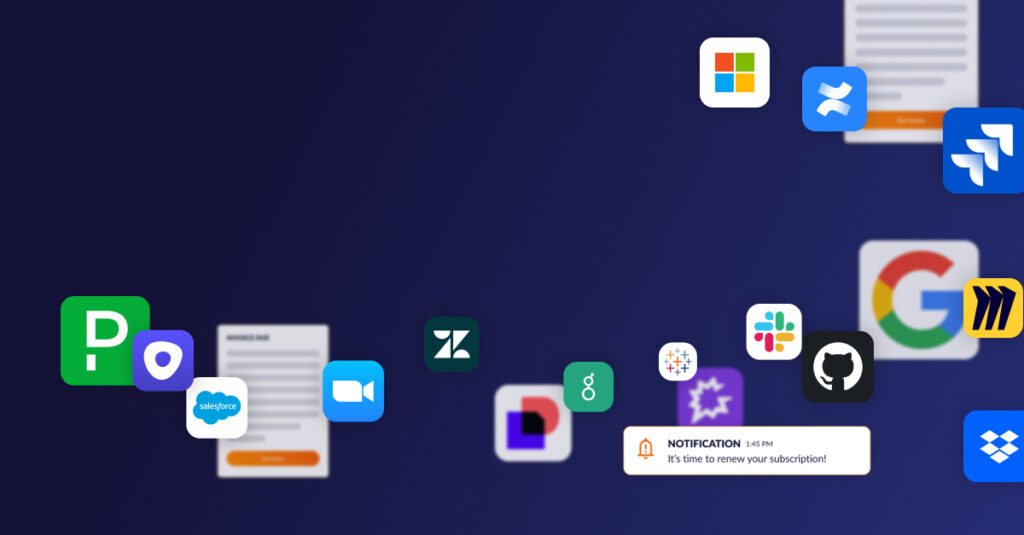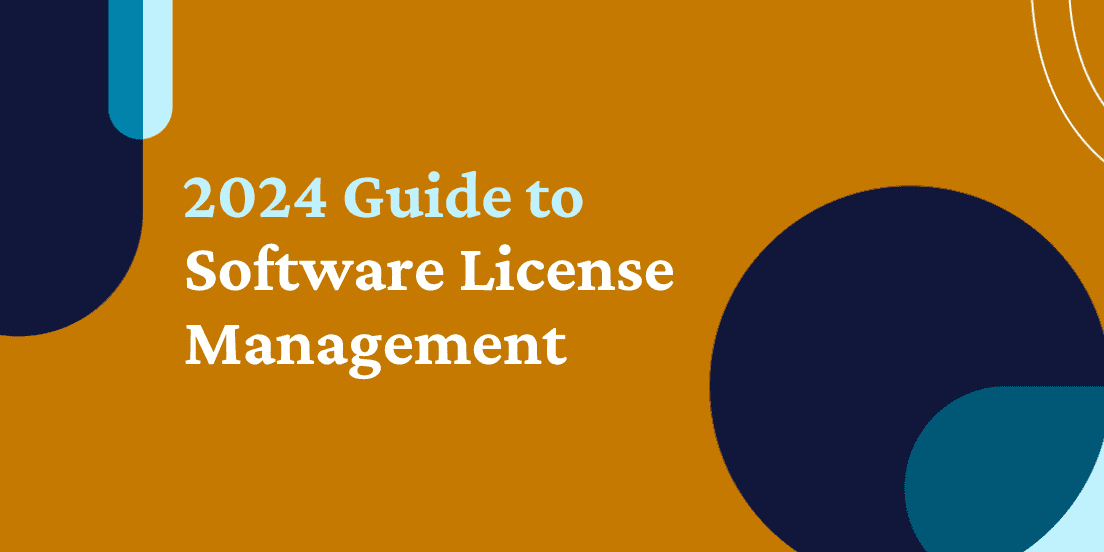
2024 Guide to Software License Management
Effectively managing your software licenses is a key factor in optimizing your spend. Whether you’re looking to understand what licenses you have or are diving into what it takes to manage them, discover how to confidently start building a software license management (SLM) strategy.
What is a software license?
A software license is a legal agreement between a software publisher and a user that defines the terms and conditions under which the software can be used. The license typically outlines the number of devices or users who are allowed to use the software, the duration of the license, any restrictions or limitations on use, and any fees or royalties that must be paid.
Software licenses can fall into a variety of categories, including:

- Proprietary software licenses: Owned by the software company and prohibit users from sharing, modifying, or distributing the software without the company’s permission.
- Open source licenses: Allow users to view, modify, and redistribute the software’s source code freely.
- Free software licenses: Similar to open source licenses, but they also include restrictions on how the software can be used or distributed. Examples of free software licenses include the GNU Affero General Public License and the Mozilla Public License.
- Permissive licenses: Also similar to open source licenses but have fewer restrictions. Examples of permissive licenses include the MIT License and the BSD License.
- Copyleft licenses: Require that any modifications or derivative works of the software be licensed under the same terms as the original software. The GPL is a popular example of a copyleft license.
- Proprietary but free licenses: A hybrid of proprietary and open source licenses, allowing users to use and modify the software for free but with restrictions on distribution and commercial use. An example of a proprietary but free license is the Creative Commons Attribution-NonCommercial-NoDerivs license.
- Dual licenses: These licenses allow users to choose between two different types of licenses depending on their needs. For example, a company might offer a proprietary license for commercial use and an open source license for non-commercial use.
In either case, software licenses help to protect the intellectual property of the software publisher while providing users with legal permission to use the software in accordance with the terms of the license agreement.
What is software license management?
Software license management refers to the process of tracking, controlling, and managing the use of software licenses within an organization. This includes managing the procurement, deployment, maintenance, and retirement of software licenses to ensure compliance with licensing agreements and legal requirements.
What is involved in software license management?
License procurement
License procurement is the process of identifying and acquiring the software licenses that an organization needs. This involves determining the appropriate licenses, evaluating the costs and benefits of different licensing models, and negotiating agreements that provide maximum value while minimizing costs.
License deployment
The process of license deployment includes setting up and configuring software licenses on devices, servers, or cloud-based systems that need to use the software. This ensures that the software is correctly installed and set up to operate efficiently and effectively, while following the terms and conditions of the license. Ongoing management and maintenance of the software licenses may also be necessary to ensure ongoing compliance and optimal software performance.
License tracking and monitoring
License tracking and monitoring involves keeping detailed records of software licenses utilized in a company and monitoring how they are used to ensure adherence to licensing agreements. This includes monitoring license terms, expiry dates, usage permissions, and other pertinent details to guarantee that the software is being used in compliance with the licensing agreements.
License renewal and retirement
License renewal and retirement refer to the process of managing software licenses as they approach expiration or become no longer necessary. This involves tracking license expiration dates and renewing licenses as necessary to ensure continued access to the software. Additionally, it involves retiring unused or unnecessary licenses to free up resources and reduce costs.
License optimization
License optimization involves identifying opportunities to improve the management of software licenses to reduce costs and improve operational efficiency. This includes identifying unused or underutilized licenses and reassigning them to reduce the number of new licenses needed.
It also involves eliminating redundant licenses and shifting to cloud-based solutions where appropriate. Additionally, license optimization helps organizations stay compliant with licensing agreements while avoiding costly penalties associated with non-compliance.
Why is software license management important?
This practice has become increasingly critical for businesses due to the growing number of software licenses required by organizations from multiple vendors. With the rise of digital transformation initiatives, businesses are using a wider range of software applications than ever before, leading to a complex licensing landscape that must be carefully managed.
Failure to properly manage software licenses can result in legal penalties, financial costs, and reputational damage. As a result, many organizations are implementing license management strategies to ensure compliance, optimize license usage, and reduce costs. Effective strategies can help organizations navigate the complexities of software licensing and ensure that they are making the most of their software investments.
What are the benefits of software license management?
Effective SLM provides a number of benefits for organizations, including the ability to reduce software licensing costs. By optimizing license usage and eliminating redundant licenses, organizations can save money and redirect resources to other areas of their operations.
It also helps organizations minimize the risks associated with non-compliance with licensing agreements, such as legal penalties and other costs. By maintaining a comprehensive record of software licenses and monitoring their usage, organizations can ensure that they are complying with licensing agreements and avoiding unnecessary risks.
Software license management helps organizations better understand and optimize their software assets. By tracking licenses and usage, organizations can find unused licenses and consolidate purchases for better contract terms. This reduces costs, improves efficiency, and aligns software usage with business needs.
Overall, it’s essential for organizations that want to manage their software assets effectively, reduce costs, and mitigate risks. By implementing effective processes, organizations can gain greater control over their software usage, improve compliance, and optimize their software investments to achieve better outcomes across their operations.
What are the challenges of software license management?
A variety of challenges organizations face when trying to manage software licenses include gaining basic visibility into what is used and ensuring the right licenses get renewed at the right time.
Tracking software usage across departments
With multiple departments and users utilizing various software applications, it can be challenging to track software usage and ensure that licenses are being used efficiently. Organizations may struggle to maintain a comprehensive inventory of software licenses, which can result in underutilized licenses or license overuse.
Managing software contracts and renewals
Software licensing agreements (SLAs) can be complex, with varying terms and conditions. Organizations may struggle to keep track of contract details and renewal dates, which can lead to expired licenses or unexpected license costs.
Ensuring compliance with licensing terms
Compliance with licensing agreements is essential for organizations to avoid legal penalties and reputational damage. However, tracking software usage and ensuring compliance with licensing terms can be difficult, particularly for large organizations with multiple software applications and users.
Coping with the rise of cloud-based software
With more organizations adopting cloud-based software solutions (e.g. SaaS apps), managing software licenses has become more challenging. Cloud-based software licenses may have different terms and conditions than traditional licenses, requiring organizations to adapt their license management strategies.
Overall, effective software license management requires organizations to address these challenges and implement processes to ensure that software licenses are tracked, managed, and optimized to meet business needs. By addressing these challenges, organizations can minimize costs, reduce risks, and ensure that their software assets are being used effectively.

What does a SaaS Management Platform look like?
Best practices for software license management
Effective software license management requires organizations to implement best practices that help them optimize their software assets while minimizing risks and costs. Here are some best practices we recommend.
Conducting regular software audits
Regular software audits can help organizations gain a better understanding of their software assets, identify underutilized or redundant licenses, and ensure compliance with licensing agreements. Audits can also help organizations detect and mitigate security risks associated with software usage.
Tracking software usage
Tracking software usage is essential for effective license management. Organizations should maintain a comprehensive inventory of their software licenses and monitor usage to ensure compliance with licensing terms and identify opportunities for optimization.
Consolidating software licenses
Sometimes licenses for the same software are purchased separately by different employees or departments. Consolidating these software licenses into one contract can help organizations reduce costs and simplify license management.
Negotiating better pricing and contract terms
Negotiating better pricing and contract terms can help organizations reduce software licensing costs and improve license management. Organizations should seek to negotiate favorable pricing, licensing terms, and renewal options with software vendors.
Addressing SaaS apps
SaaS apps add complexity to software license management as licenses are often subscription-based and can be charged per user, making it challenging to track license usage. Organizations should implement processes to track and manage SaaS app usage and ensure compliance with license agreements. Consider researching SaaS Management Platforms built specifically for managing SaaS applications and their licenses.
Tools available for software license management
Tools and technologies play a critical role in software license management, helping organizations to automate the license management process, gain better visibility into their software assets, and optimize license usage. Here are some tools and technologies that can help organizations manage their software licenses more effectively.
Software asset management (SAM) tools
SAM tools enable organizations to maintain a comprehensive inventory of their software assets, track license usage, and ensure compliance with licensing agreements. SAM tools can help organizations identify unused or underutilized licenses, optimize license usage, and reduce software licensing costs.
SaaS Management Platforms
As more organizations adopt SaaS applications, managing licenses for these applications can become increasingly challenging. SaaS Management Platforms can help organizations track and manage renewals, monitor usage, and ensure compliance with license agreements.
License management software
License management software can help organizations automate the license management process, from procurement to retirement. These tools can help organizations track license usage, renew licenses, and retire unused licenses, reducing costs and minimizing license compliance risks.
License compliance management software
License compliance management software can help organizations ensure compliance with software licensing agreements. These tools can help organizations detect and mitigate license compliance risks, monitor license usage, and generate reports to demonstrate compliance with licensing terms.
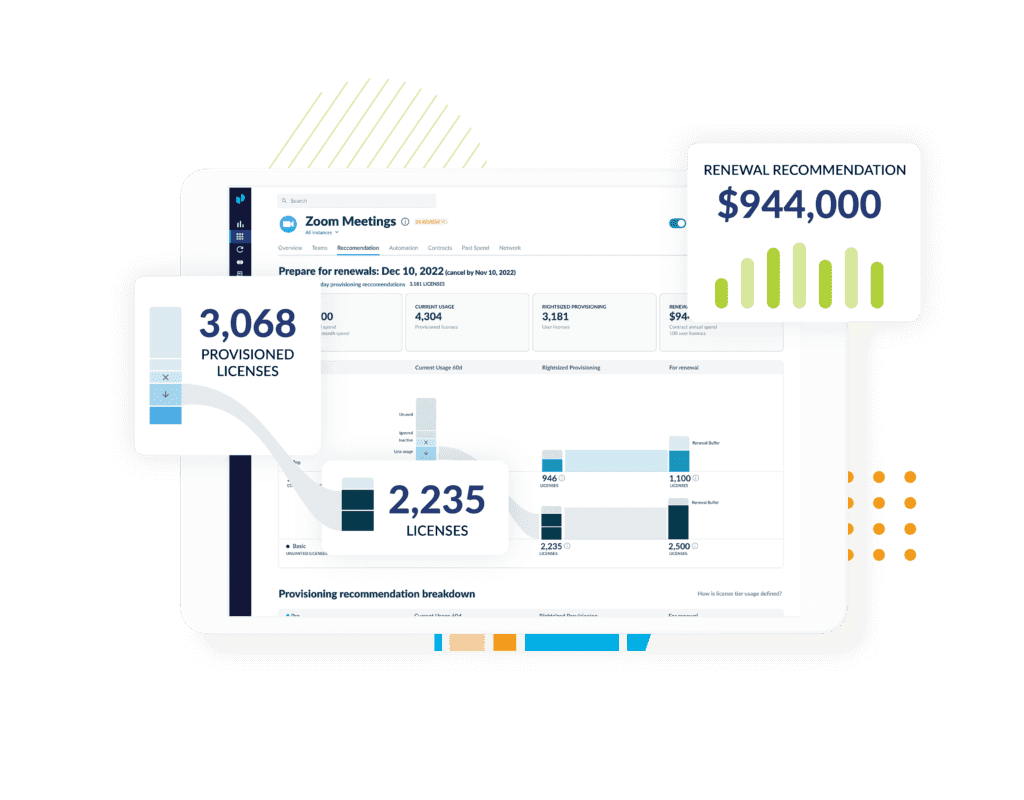

What does a SaaS Management Platform look like?
About Productiv:
Productiv is the IT operating system to manage your entire SaaS ecosystem. It centralizes visibility into your tech stack, so CIOs and IT leaders can confidently set strategy, optimize renewals, and empower employees.
Learn more today